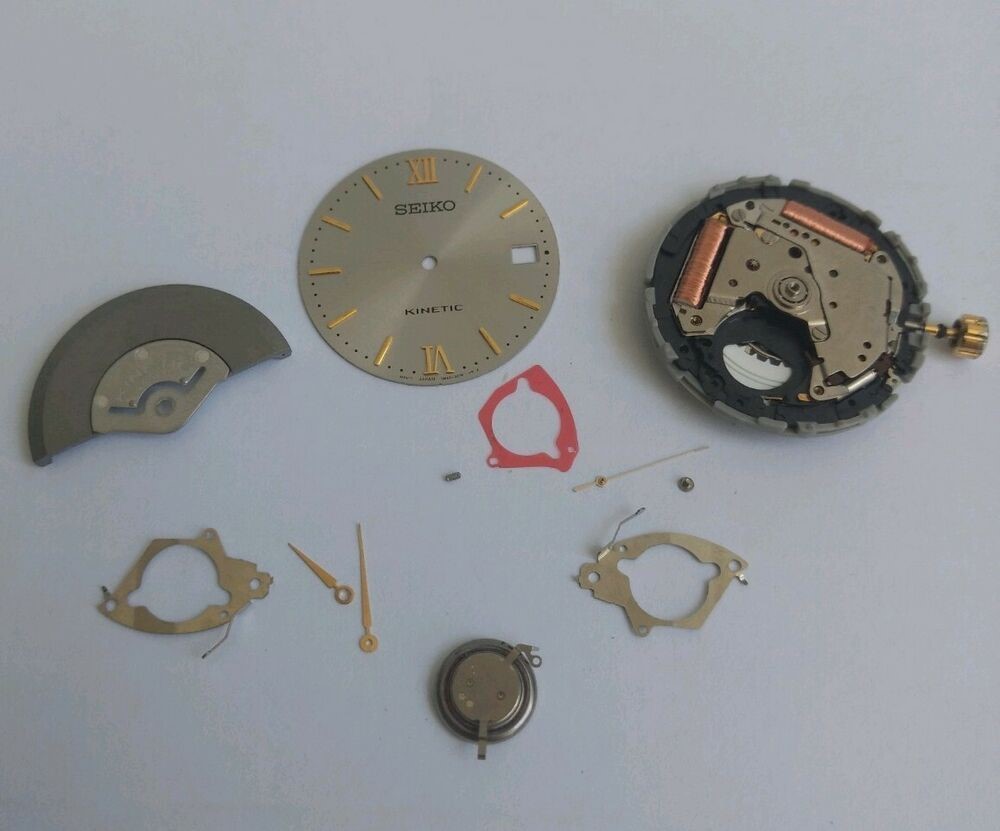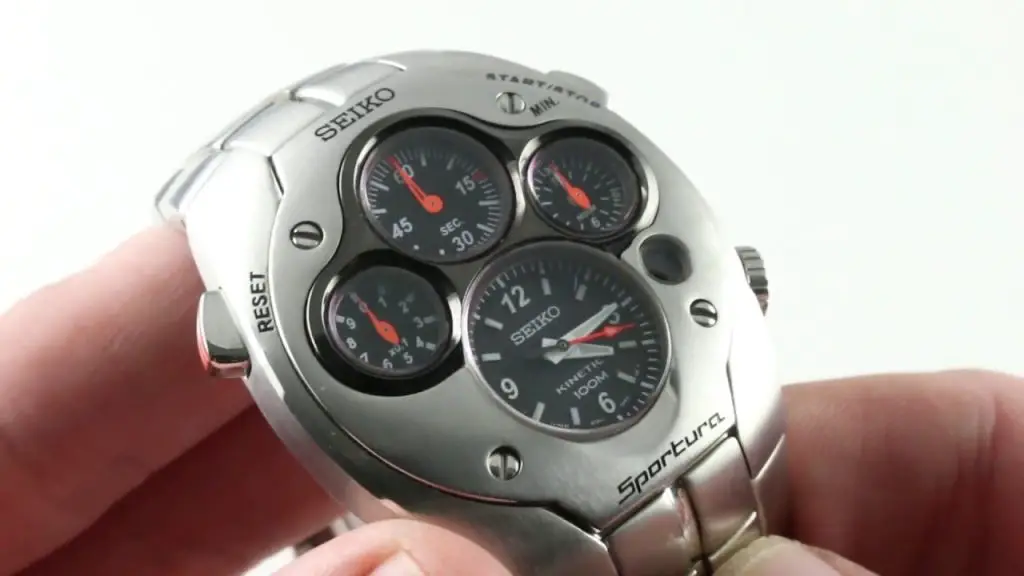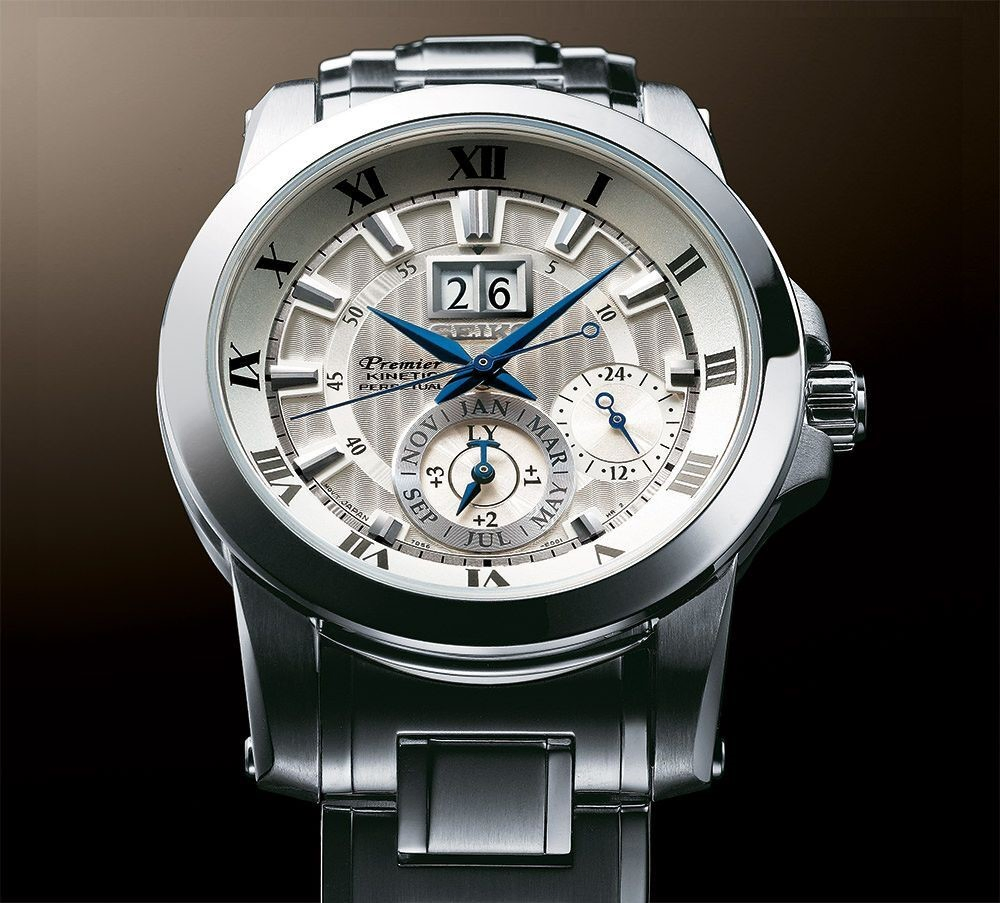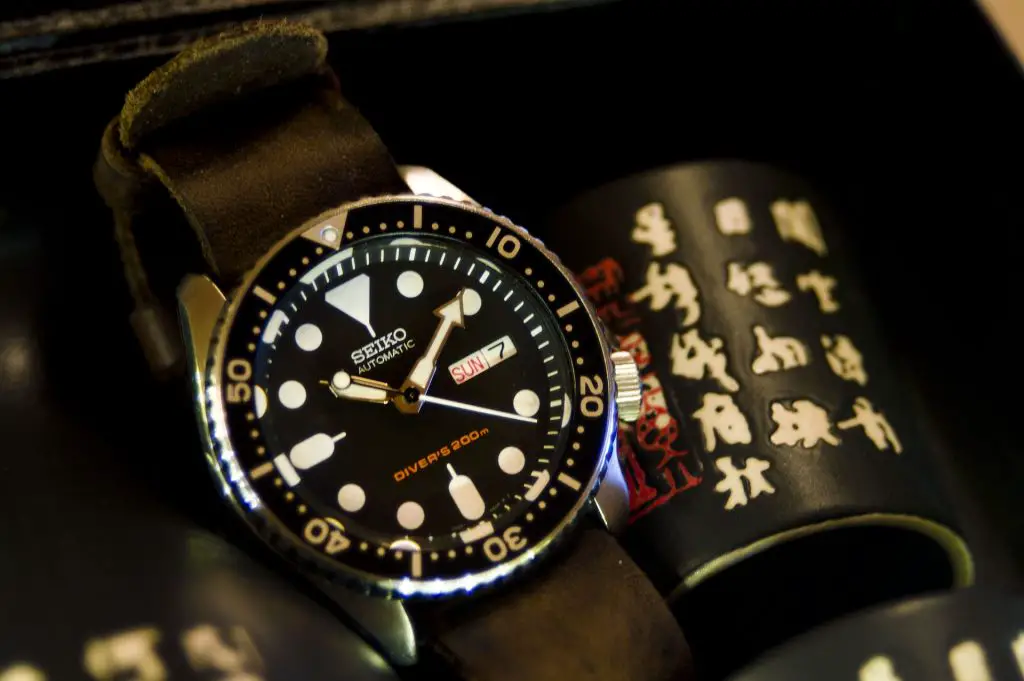Just like a mechanical (automatic) watch, a quartz-controlled watch too can use kinetic energy. A kinetic watch uses the motion of your wrist to energize a battery that drives the quartz oscillator. Thus, kinetic watches are similar to automatic watches.
A good portion of the common users feels that quartz watches can ‘only’ be powered by a lithium-ion battery. So, all quartz watches are limited by the capacity of the battery.
As you can guess, this belief is far from the truth!
Watch manufacturers have come up with a number of technologies the remove the dependency on the battery capacity for quartz watches. Seiko and Citizen have been the pioneers in this case.
In fact, Seiko first presented the kinetic technology back in 1986 at the Basel Fair trade show. However, Kinetic watches became available to the public in 1988 as Seiko launched the ‘Auto-Quartz.’
Later, in 1991, Seiko officially introduced the Kinetic brand to the public. Thus, all the kinetic watches are from Seiko only.
Other manufacturers soon followed the trend– i.e., ETA developed ‘Autoquartz,’ Citizen developed Eco-Drive Duo, and Ventura came up with VEN_99.
Okay, we got the history lesson. But how does a kinetic watch work?
Let’s dig into that matter!
What Does Kinetic Mean on A Watch?
‘Kinetic’ energy is a type of energy that any object possesses through its motion or movement.
For example, think about a roller coaster car – it gets energized as it moves along the rail. Then, uses that same energy to move even further. Now, we recognize this energy as kinetic energy.
So, what does kinetic mean on a watch?
To understand the basics, we need to take a look at the mechanical movements first. In a mechanical wristwatch, there’s a spiral torsion spring device called a mainspring. A user has to manually ‘wind’ this mainspring to keep the gears moving.
But the manual effort to ‘wind’ the watch was seen as a nuisance.
Enter, automatic movement!
An automatic movement (based on mechanical movement) uses a semicircular weight called ‘rotor’ that swings back and forth as the user moves the wrists. The rotor winds the mainspring and solves the issue of manual winding for mechanical watches.
More: Best Watch for Basic Training: The Ultimate Showdown of Tough Watches
Thus, we saw the first use of kinetic energy in the watch watches.
Now, let’s take our attention to the quartz watches.
These watches use quartz crystals working as electronic oscillators. The oscillation rate has a fixed frequency of 32,768Hz. Finally, a digital logic counter tracks the oscillation rate, thus telling us time.
However, the quartz crystal needs electric power to generate the oscillation pulses. That’s why it requires a DC battery with a limited capacity.
Users often find this to be the biggest disadvantage of quartz watches.
A kinetic watch solves this issue just like the automatic movements.
So, just like automatic movements, kinetic watches use a rotor that moves back and forth as you move your wrist. The rotor is attached to a gear and pinion device. The movement of the rotor makes the small pinion rotate at a very high speed, around 100,000 pm.
This attachment is connected to a tiny electric generator that electrically charges an Electric Supply Unit (ESU) that basically functions as a DC battery. The ESU is often called capacitors. The rest of the functional construction remains the same as a typical quartz watch.
So, that’s how a kinetic watch work using a rotor-based construction of the automatic mechanical movement.
More: How Do You Maintain A Leather Watch Strap
YouTube:
How Long Do Kinetic Watches Last?

Once you fully recharge your kinetic watch, it should last for about six months. However, this time is completely dependent on the capacity and efficiency of the ESU/capacitors.
For example, Seiko Men’s SRN047P1 Kinetic Blue Watch lasts for about four months with a full charge. This particular watch uses Seiko 5M84 caliber with a Seiko 3023-5MZ capacitor.
Now, this ‘lifespan’ would vary from capacitor to capacitor. Still, you can expect them to last for about four to six months on average.
The ‘charge-life’ varies based on the ‘type of kinetic movements.’ There are a total of six variants of kinetic movements available in the market –
More: Check our guide to How Do I Stop My Automatic Watch from Stopping? Here
| Type of Kinetic Movement | Expected Charge Life (Average) |
|---|---|
| Kinetic Direct Drive | 1 month (can be hand-wound) |
| Ultimate Kinetic Chronograph | 1 month (can be hand-wound) |
| Basic Kinetic Chronograph | 4 to 6 month |
| Kinetic Perpetual | 6 months (can preserve time for 4 years using sleep mode) |
| Kinetic Auto Drive | 4 years (goes to sleep mode after 72 hours) |
| GMT Kinetic | 4 years (goes to sleep mode after 72 hours) |
Each of the types of kinetic movements has some unique features. For example, Ultimate Kinetic Chronograph and Basic Kinetic Chronograph offers all the chronograph timekeeping features. Then, GMT Kinetic lets you keep the time of multiple time zones.
More: Best Croton Watches Review: Ghost of the Former Self?
As for the watch itself, users are in a serious debate. Some say that kinetic watches last for more than a decade, while others say that none of their kinetic watches have lasted more than five years.
In any case, a kinetic watch would at least last for five years and might last for decades. Your usage rate, usage style, and external environment have a major influence on the lifespan of the watch.
YouTube:
What Is the Difference Between an Automatic and a Kinetic Watch?

Apart from the presence of a rotor, there is practically no similarity between these two types of watches.
An automatic watch uses the rotor to ‘wind’ the mainspring and uses the tension of the spring to move all the gears. These gears move in a synchronous fashion and move the second, minute, and hour hands to tell time.
On the other hand, a kinetic watch uses the rotor to recharge the ESU/capacitor that the quartz crystal needs to general oscillating electric pulses. A logic counter counts the pulses and tells time using the count results.
More: Best LAD Weather Watch Review: Should You Get This Budget Outdoor Watch?
As you can see, both of the watches use a rotor to use the kinetic energy deriving from the motion of the user’s wrists.
However, each of the mechanism uses that energy in a completely different way. The automatic movement uses it to enable mechanical movements inside the watch. But kinetic movement uses it to energize the ESU/capacitor.
YouTube:
Are Kinetic Watches Any Good?
YES!
Kinetic watches are one of the most magnificent innovations coming from Seiko. It would also help if you considered the fact the Seiko has implemented multiple iterations of upgrades to the original 1988 version of the technology.
Seiko uses the kinetic movements in their Sportura, PROSPEX, Pulser, and Lorus series. Till now, Seiko has developed 20 different iterations of kinetic movements.
Also, people have favored these watches with immense support.
As of 2007, Seiko sold over eight million Kinetic watches throughout the globe. The sales numbers are doing the talk here!
The kinetic movement has also been the main driver behind the innovation of newer-generation quartz movements. The spring drive movement – the crown jewel of Seiko innovation is just another iteration of the kinetic movements.
More: Best Watch for Paramedic: Why EMT Paramedic Watches Matter?
The spring dive movement uses a rotor and a mainspring to power-up an electronic watch.
YouTube:
Conclusion
The kinetic movement is an impressive piece of technological invention that played a key role in popularizing the quartz watches. It takes inspiration from the automatic movement’s mechanism and tries to beat it!
Not only that, the development of kinetic movements has inspired other players to push their limits. As a result, we later got solar-powered quartz movements and Eco-Drive from Citizen.
Even Seiko developed Spring Drive and Direct Drive movements based on the concepts of kinetic movements.
I hope that now you’re clear about all the fundamentals of a kinetic watch and how does a kinetic watch work.
If you still have some questions regarding the issue, please let me know, and I’ll get back to you.


